The fine wine market has forgotten the principles of investment in real asset classes. Over the past decade, a transformation has taken place in the mindset of wine collectors and much of the fine wine trade. Having witnessed an impressive wave of increased demand, regional diversification, and ultimately, price inflation through the 2000s, wine collectors dared to seek short-term gains, selling cases – at first to finance better drinking – before the concept of fine wine trading was normalised in its own right.
Fine wine trading frenzy
The impact this had on pricing under the magnifying glass of the global pandemic is unprecedented, and unlikely to reoccur. If you bought Cristal Champagne 2008 in July 2020, and sold it in October 2022, you would have more than doubled your money, even when accounting for a substantial and necessary spread on exit (c.10-15%) covering the physical movement of the wine. Even the stalwart but safe Bordeaux first growths performed well, returning 18% on average within the same time period.
The downside of short-term trading fever
Trading fine wines like commodities is not only problematic from a moral standpoint (at least in the eyes of producers, who make wines to be aged and then enjoyed, not shifted from warehouse to warehouse, filling the pockets of each new seller along the way), it creates false rarity. The sluggishness of today’s market is, in large part, a direct result of this phenomenon, with mountains of previously tucked away stock coming to the surface simultaneously, as pure investors face a cash squeeze, and therefore seek a quicker exit than was perhaps ever viable for a real asset.
What’s next?
A shift in sellers’ strategy
First, it means that merchant models who typically hold vast stocks of wines have ceased to increase their inventory, preferring to generate cash through discounts on their existing holdings. The knock-on effect will be tightened purse strings at source – producers, Bordeaux negociants, or importers will have to present extremely attractive offers to persuade stockholders to take on more wines. This particularly applies to the Bordeaux 2023 en primeur campaign.
Who will fill the gaping hole?
The only reason for the trade to increase inventory would be to fulfil new demand, which certainly won’t be coming from mature markets such as the UK, US, or China anytime soon, given their current weak economic growth and stubborn inflation. Emerging markets in South-East Asia could ease some of this pressure in the mid-term, but in the meantime, there remains a gaping hole between producers’ annual sales cycle of new vintages, and filtration down the supply chain.
A window opportunity for long-term stable investment
This gap is a huge opportunity. In the past months, we have seen Bordeaux uncover and offer inventory that has been hidden from view for years, at competitive prices as they seek to release capital tied up in back vintages, and ready themselves for the next new vintage (2023), which they must purchase in order to maintain their allocations of the top wines in years to come.
Our vision is to acquire these treasures – representing the pinnacle of modern winemaking – and to preserve them under perfect conditions for future generations. Their proprietors – our clients – will be afforded exit opportunities based on a private equity model, after a minimum hold period of 7 years, and over the course of 10-25 years. This essentially mirrors the stock flow control now being implemented at château-level. Producers have understood the benefit of reducing the proportion of a given new vintage to the market as soon as it is bottled, preferring instead to release in waves over several decades, and thus implementing a more stable pricing and distribution strategy. Much like the waiting list for a Patek Philippe or F.P. Journe, this protects brands in the long-term, ensuring that the greatest wines fall into the hands of those who will protect and appreciate them.
Final thoughts
It is no great mystery as to why some of the best trades – within fine wine, luxury goods, or the wider financial market – occurred immediately following the 2008 financial crisis. Those who can front the cash today find themselves with an in to a buyer’s market, offering better access the finest wines at competitive prices – a window not to be missed.

